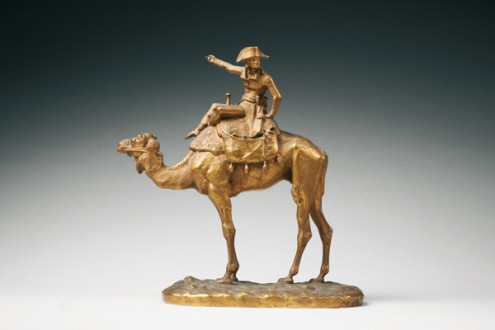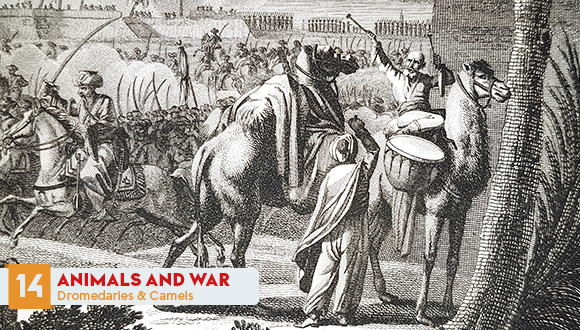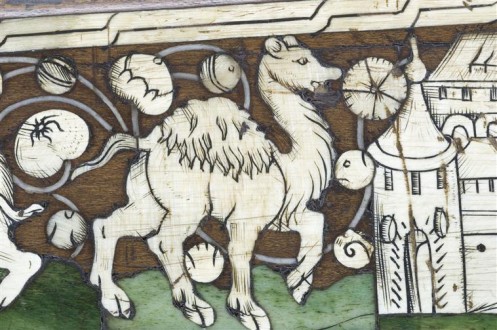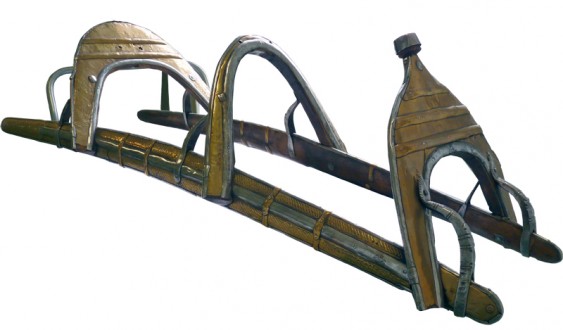
Bonaparte riding a dromedary and pointing to the horizon. Gilt bronze figure modelled by Henri-Alfred Jacquemart and cast by Ferdinand Barbedienne. General Bonaparte did a dromedary riding test during his stay in Egypt. The African Museum in the Ile d’Aix keeps in its collections a stuffed dromedary believed to have been ridden by Bonaparte during the Campaign in Egypt. The idea of the future emperor riding a dromedary stood up and was remembered for a long time. Several artists of the French Orientalist movement chose to portray him in this posture. On the piece reproduced above, Napoleon is depicted as a war leader who points to the primary objective to be achieved while encouraging his men to follow him. As for the dromedary, it remains placid © Paris, musée de l’Armée, Dist. RMN-GP / Thierry Ollivier
Matchlock musket, ca 1590-1600 © Paris, musée de l’Armée, Dist. RMN-GP / Tony Querrec
Camel’s saddle on exhibit in the room dedicated to the Campaign in Egypt in the Musée de l’Armée © Paris, musée de l’Armée
Scène de la campagne d’Égypte © Paris, musée de l’Armée
Dromedaries & Camels
One Hump & Two Humps Camels
Since Antiquity, dromedaries and camels have been present on the battlefields in Africa, Asia, but also in Europe where both species were introduced between the first and the second century A.D.
Dromas
Fast and nervous, the dromedary – from Greek dromas – is employed in warfare, either to quickly carry troops to areas of armed confrontation or used against enemy mounted units since its smell and physical appearance frightened the horses.
Abundantly used in North Africa and Arabia, the use of this animal in European countries was solely occasional or anecdotal. Bonaparte created the first French Camel Regiment during his Campaign in Egypt. This elite unit compensated for the lack of horses in the occupied territory by introducing new military tactics. Dromedaries did not engage directly into battle but carried the infantry to areas of armed confrontation. In case of a definite military advantage, dromedaries also were perfectly suitable to pursue the enemy during the retreats to secure conclusive victory. The achievements of this regiment inspired colonial powers to use animal resources in the occupied territories. The British Army created a Camel Corps in Egypt and in Afghanistan. Like horses, dromedaries were gradually being replaced during the 20th century by motorized vehicles. Nowadays, the only operational Camel contingents are those attached to the Border Security Force of the Union of India whose main task is to carry out surveillance border outposts located on the India-Pakistan border…





Ajouter un commentaire